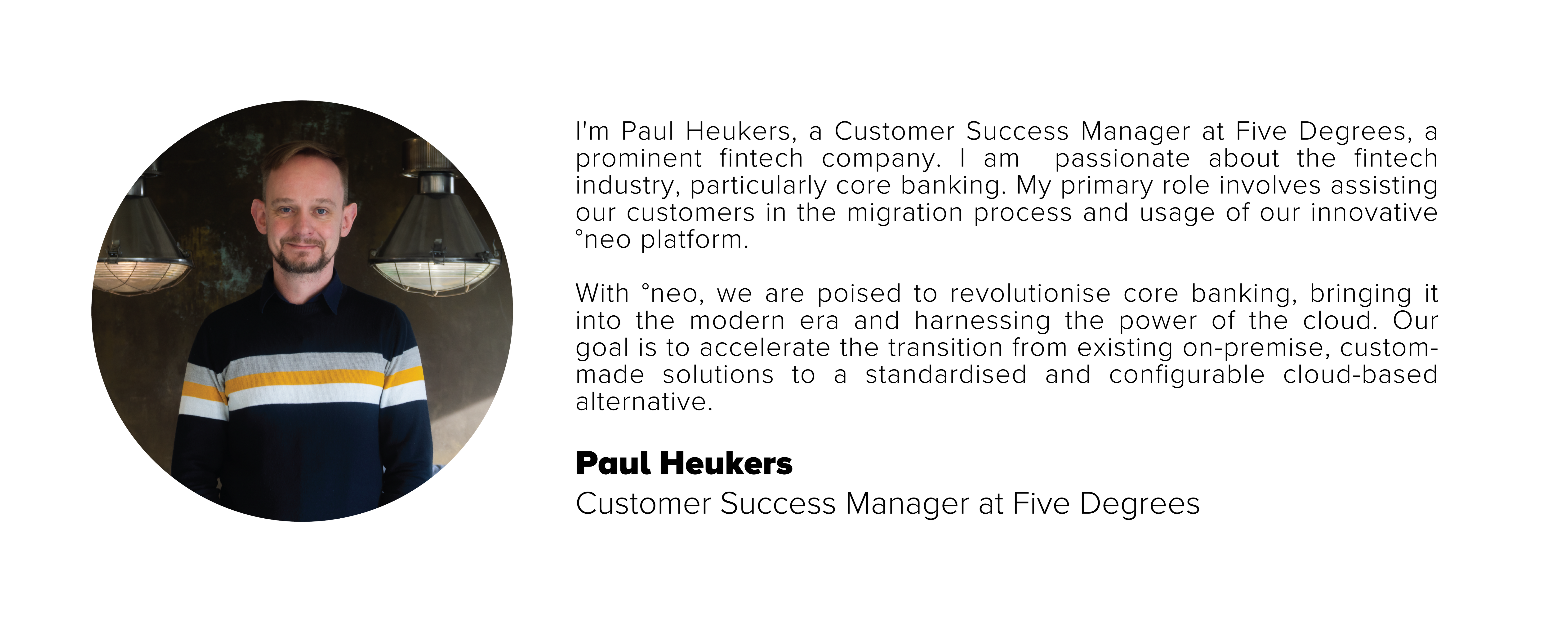Published on: August 25, 2023

When financial institutions embark on the journey of selecting a core banking vendor, the traditional procurement process often involves issuing a Request for Proposal (RFP) or a Request for Information (RFI) to assess potential suppliers. An RFP serves as a crucial document used to gather essential information from vendors, outlining requirements, pricing details, and expertise to evaluate offerings that align with the institution's goals. On the other hand, an RFI seeks general information from potential suppliers.
At five°degrees, we recognize the significance of this conventional method in facilitating the selection of the right core banking solution. However, we also believe that exploring alternative approaches can further optimize the vendor selection journey.
In this blog, we delve into the more technical aspects of core banking vendor selection, building upon our previous guide, "Choosing the right vendor for cloud-based core banking software." Our focus lies on presenting a fresh perspective that involves harnessing the power of Proof of Concept (PoC) to complement the traditional RFI and RFP process.
To demonstrate the effectiveness of this approach, we interviewed Paul Heukers, Customer Success Manager at five°degrees, who played a pivotal role in a recent PoC project with a well-known financial institution. Paul shares his insights and experiences regarding this dynamic method of core banking vendor selection.
Traditionally, financial institutions rely on RFPs or RFIs to gather comprehensive information from potential vendors during the procurement process. An RFP outlines specific requirements and asks targeted questions to evaluate offerings aligned with organizational goals. In contrast, an RFI seeks general information from potential suppliers.
A PoC, on the other hand, goes beyond the conventional RFI approach by demonstrating or prototyping the feasibility of an idea, technology, or system. The primary purpose of a PoC is to validate the concept's viability and provide concrete evidence that software can be successfully implemented in each tech stack or environment.
Paul: Absolutely! We received a comprehensive RFI from a potential client interested in transitioning their current core banking system to a cloud-native solution like °neo. Rather than responding to all the questions in the RFI, we decided to engage in direct discussion with the client. This approach allowed us to gain deeper insights into their specific needs and business objectives. Consequently, we opted for a PoC as an initial phase, which saved time and enabled us to provide a more tailored solution.
Paul: The onboarding process was incredibly efficient, with the platform set up within a matter of days and successfully connected within just one day. The client was highly satisfied with the speed and simplicity of the connectivity process. The entire Proof of Concept (PoC) project spanned about three weeks.
Paul: We facilitated the client's exploration of our platform by providing a sandbox environment seamlessly integrated with their Active Directory. This allowed them to simulate a realistic customer experience and test various functionalities hands-on. By actively engaging with the platform, the client could identify necessary modifications and evaluate how well °neo integrated with their existing systems.
The PoC proved immensely beneficial as it offered an interactive and dynamic process for core banking implementation. It enabled the client to actively engage with the platform, test functionalities, and identify any potential gaps or required adjustments. This real-world scenario replication helped the client realize which requirements were unnecessary due to the platform's modernity and improved functionalities, streamlining their project plan and cost estimation.
Paul: Through the PoC, the client gained a profound comprehension of the stark disparities between legacy systems and our innovative core banking solution, °neo. This revelation led to enhanced cost estimation, seamless system integration, and an exhilarating, hands-on testing experience. The client was empowered to make a well-informed decision based on tangible evidence and a firsthand understanding of how our solution aligned with their specific requirements and business goals.
The interview with Paul Heukers, Customer Success Manager at five°degrees, highlights the power of a dynamic Proof of Concept (PoC) approach in revolutionizing core banking vendor selection. While recognizing the value of traditional RFI and RFP processes, at five°degrees, we embrace alternative methods that offer financial institutions an efficient and insightful way to make well-informed decisions.
Through the interactive and dynamic nature of PoC, financial institutions bridge the gap between legacy systems and innovative solutions, paving the way for a seamless core banking implementation journey. If you are interested in exploring the potential of a PoC with our cloud-native core banking solution, °neo, we encourage you to reach out to us and discover how it can elevate your core banking operations to the next level.
